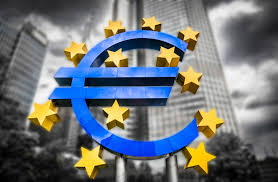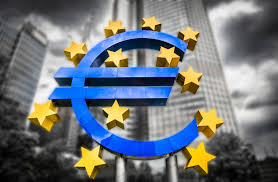
Following deals with India and Japan and support from the Group of Seven richest democracies, foreign ministers of the European Union have agreed on the launch of a global infrastructure plan seeking to link Europe to the world.
The EU has chalked out a formal path for an ambitious "connectivity" plan slayed to start from 2022 amid growing suspicion that the Belt and Road Initiative of Chinese President Xi Jinping seeking to link Europe to Asia through a slew of infrastructure projects is an effort of Beijing to increase its global influence more than creating linkages to facilitate trade.
"We see China using economic and financial means to increase its political influence everywhere in the world. It's useless moaning about this, we must offer alternatives," German Foreign Minister Heiko Maas told reporters at a meeting with his EU counterparts in Brussels.
"It is important that the European Union ... coordinates them very closely with the United States," he said.
Partnerships for coordination in areas of transport, energy and digital projects that will link Europe and Asia have already been signed by the EU with Japan and India. There are concerns in both India and Japan about the generosity of loans that China is providing in the name of the Belt and Road Initiative which some officials say is a way of China to make the poorer countries obliged to Beijing as many of such countries are forced to take on such large debts for China.
Greater transparency in infrastructure partnerships is also sought to be provided by the G7 – whose leaders had met in June in the United Kingdom, through use of regional development banks, first-loss guarantees to private companies and the use of Western government know-how and technologies.
Western officials say one of the highest-profile casualty of Chinese debt is Montenegro which is a member of the NATO military alliance as well as an aspirant to join the EU. In 2014, almost $1 billion was borrowed by Montenegro from China for funding of a 41-km (25-mile) stretch of road. That debt is now threatening to bankrupt the country. The country is now trying to negotiate a swap or refinance the debt with Western banks, said recent reports.
There is no mention of China in the so called "A Globally Connected Europe" project strategy of the EU. However a word of caution against China an adversary was sounded by Luxembourg's veteran Foreign Minister Jean Asselborn who also noted that more vehicles were sold in China by German car makers than in Germany.
But the eight-page document had "China written all over it", said reports quoting a EU diplomat involved in drafting of the strategy,
Large construction projects across more than 60 countries have been launched by China since 2013 aimed at building a network of land and sea links with Southeast Asia, Central Asia, the Middle East, Europe and Africa.
Allegations of China projecting power through this initiative have been denied by Beijing and China has said that the needs of ordinary people are the major focus of the infrastructure corridors.
(Source:www.theglobeandmail.com)
The EU has chalked out a formal path for an ambitious "connectivity" plan slayed to start from 2022 amid growing suspicion that the Belt and Road Initiative of Chinese President Xi Jinping seeking to link Europe to Asia through a slew of infrastructure projects is an effort of Beijing to increase its global influence more than creating linkages to facilitate trade.
"We see China using economic and financial means to increase its political influence everywhere in the world. It's useless moaning about this, we must offer alternatives," German Foreign Minister Heiko Maas told reporters at a meeting with his EU counterparts in Brussels.
"It is important that the European Union ... coordinates them very closely with the United States," he said.
Partnerships for coordination in areas of transport, energy and digital projects that will link Europe and Asia have already been signed by the EU with Japan and India. There are concerns in both India and Japan about the generosity of loans that China is providing in the name of the Belt and Road Initiative which some officials say is a way of China to make the poorer countries obliged to Beijing as many of such countries are forced to take on such large debts for China.
Greater transparency in infrastructure partnerships is also sought to be provided by the G7 – whose leaders had met in June in the United Kingdom, through use of regional development banks, first-loss guarantees to private companies and the use of Western government know-how and technologies.
Western officials say one of the highest-profile casualty of Chinese debt is Montenegro which is a member of the NATO military alliance as well as an aspirant to join the EU. In 2014, almost $1 billion was borrowed by Montenegro from China for funding of a 41-km (25-mile) stretch of road. That debt is now threatening to bankrupt the country. The country is now trying to negotiate a swap or refinance the debt with Western banks, said recent reports.
There is no mention of China in the so called "A Globally Connected Europe" project strategy of the EU. However a word of caution against China an adversary was sounded by Luxembourg's veteran Foreign Minister Jean Asselborn who also noted that more vehicles were sold in China by German car makers than in Germany.
But the eight-page document had "China written all over it", said reports quoting a EU diplomat involved in drafting of the strategy,
Large construction projects across more than 60 countries have been launched by China since 2013 aimed at building a network of land and sea links with Southeast Asia, Central Asia, the Middle East, Europe and Africa.
Allegations of China projecting power through this initiative have been denied by Beijing and China has said that the needs of ordinary people are the major focus of the infrastructure corridors.
(Source:www.theglobeandmail.com)














